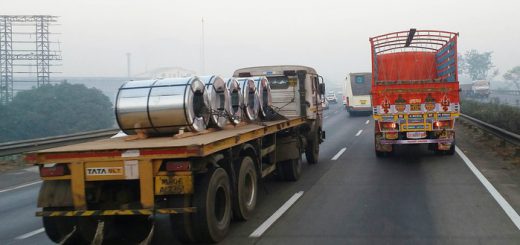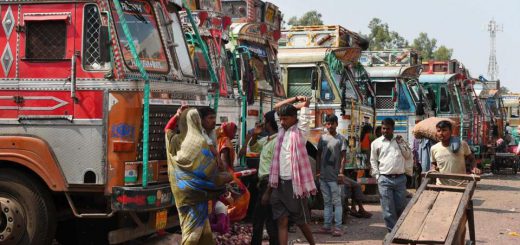Understanding Factors That Influence Transportation Costs
Transportation plays a crucial role in modern society, facilitating the movement of goods and people across vast distances. However, this mobility comes at a cost, which can vary substantially depending on several factors. Identifying these elements enables individuals and businesses to make informed decisions about transportation modes, routing, frequency, and investment. In this article, we will examine various factors influencing transportation costs in detail.
Key Factors Influencing Transportation Costs
Distance
One obvious factor affecting transportation costs is distance. Generally speaking, longer distances require more resources – time, fuel, labor, and equipment – resulting in higher expenditures. Consequently, shipping charges increase proportionately with distance, regardless of the mode of transport used. Nevertheless, certain economies of scale may offset these costs for specific transportation methods; for example, railroads and cargo ships benefit from spreading fixed infrastructure investments over larger volumes, thereby reducing per-unit expenses as distance grows. Therefore, understanding how distance influences transportation costs is vital for selecting appropriate modes and negotiating contracts.
Mode of Transportation
The chosen mode of transportation has a considerable impact on overall costs. Different modes exhibit distinct advantages and disadvantages concerning capacity, speed, accessibility, and flexibility. Air freight provides rapid delivery times but tends to be pricey due to high fuel consumption and operational complexities. Ocean liners offer substantial carrying capacities and relatively low rates per unit weight but suffer from slow transit times and limited port coverage.
Rail transport boasts competitive pricing and reliable schedules, particularly for bulk commodities and container shipments, although its network density varies considerably across regions. Road networks remain indispensable for last-mile deliveries and just-in-time logistics, yet face challenges related to congestion, pollution, and infrastructure maintenance. Thus, assessing each mode’s strengths and weaknesses is critical for striking an optimal balance between cost, speed, and adaptability.
Load Size & Weight
Another important consideration shaping transportation costs relates to load size and weight. Larger consignments typically translate into lower unit costs since they enable better utilization of available space and distribution of overhead expenses. Economies of scale become evident when comparing small parcels versus palletized loads or full truckloads versus less-than-truckload (LTL) shipments. However, exceedingly large or heavy items might necessitate specialized handling equipment, oversized permits, and additional labor, negating potential savings. As such, determining the ideal package configuration requires thorough analysis considering product dimensions, packaging materials, stacking capabilities, and compatibility with standard transportation units.
Also Read: 6 Key Tips to Excel in Refrigerated Truck Driving
Fuel Prices
Fluctuating fuel prices exert significant pressure on transportation budgets, given the energy-intensive nature of moving goods and passengers. Petroleum products constitute primary fuels for most vehicles, subjecting them to market volatility driven by geopolitical tensions, supply chain disruptions, and regulatory interventions. Notably, international trade patterns further complicate fuel pricing dynamics as exchange rate variations and tax regimes introduce additional layers of complexity. Operators employ various strategies to mitigate fuel price risks, including hedging contracts, surcharge mechanisms, and technological innovations aimed at improving energy efficiency. Nonetheless, persistent upward trends in fuel costs warrant continued vigilance and proactive management from stakeholders seeking to minimize financial impacts.
Regulations & Taxation
Government policies play a pivotal role in shaping transportation costs through regulations targeting safety, environmental protection, competition, and economic development. Examples include emission standards, labor laws, insurance requirements, toll fees, and customs duties. While these measures aim to safeguard societal interests, they sometimes impose administrative burdens, compliance costs, and artificial barriers that inflate transport expenses.
Accordingly, organizations must stay abreast of evolving regulatory landscapes and engage in advocacy efforts where necessary to promote fair and equitable treatment. Leveraging global networks, benchmarking practices, and industry associations can facilitate effective representation and enhance awareness of emerging issues affecting transportation cost structures.
Technology Adoption
Advanced technologies hold immense potential for transforming transportation cost paradigms by streamlining operations, increasing productivity, and reducing waste. Telematics, automation, IoT devices, machine learning algorithms, and blockchain platforms represent just a few examples currently being integrated into transportation ecosystems. Embracing innovation entails initial capital investments, training, and adaptation periods; however, long-term returns often materialize through enhanced process efficiencies, resource optimization, and data-driven insights informing strategic decision-making. Remaining receptive to technological developments and exploring relevant applications remains crucial for staying competitive and managing transportation costs effectively.
Conclusion
Understanding the myriad factors influencing transportation costs empowers individuals and businesses alike to make informed choices about mode selection, route planning, load consolidation, and technology adoption. Navigating this intricate landscape demands continuous learning, collaboration, and adaptation to thrive amidst shifting economic, regulatory, and technological currents. Armed with knowledge and foresight, savvy transportation managers can unlock opportunities for improvement, bolster resiliency, and propel success in today’s fast-paced world.




Recent Comments